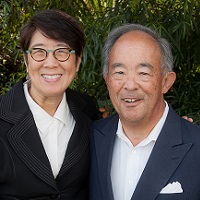 By Dr. Melissa Lim, Chief Medical Officer and Co-Founder, Somnology and Patrick Yam, CEO and Co-Founder, Somnology
By Dr. Melissa Lim, Chief Medical Officer and Co-Founder, Somnology and Patrick Yam, CEO and Co-Founder, Somnology
Twitter: @SomnologyMD
We keep hearing that sleep, a biological need as old as humanity itself, is the next big thing. Much of this newfound momentum around sleep – which is now closely tied with the wellness movement – is linked with the growth of wearable sleep trackers within smart watches and smart rings: The market is expected to grow by more than 15% between 2020 and 2026.
As researchers have noted, sleep trackers can make a huge difference in helping individuals recognize factors that could be affecting sleep (e.g., room temperature, going to bed too early), and provide some initial detection of a larger problem, such as sleep apnea. Given that the U.S. sleep epidemic currently impacts 70 million people in the U.S. and contributes to notable short- and long-term health risks ranging from accidents to serious chronic health conditions, these advances are profound. The idea that one can improve sleep, while staving off all of these health risks, simply by wearing a watch or ring – is pretty awesome. There’s just one problem. Often, these devices, and the sleep applications they host, do not go far enough. They don’t always measure sleep in a way that is helpful from a clinical perspective.
While sleep trackers can offer insights into sleep duration and consistency, consumers don’t always know how to interpret the data. As one study noted, trackers generate “overwhelmingly large datasets … [but] little guidance exists within and outside the scientific sleep community for their use, leading to confusion and controversy about their validity and application.” Patients may see sleep quality ratings of 70 points out of 100, but then what? How does an individual kick snoring, or waking up in the middle of the night in a cold sweat? If there isn’t a doctor willing to analyze droves of datasets and recommend next steps, patients are left in a lurch, their sleep issues undiagnosed. The cycle of sleeplessness continues. The answer isn’t to ditch our smartwatches or smart rings, but to be realistic about what these devices can do – and cannot. Most individuals who require treatment for serious sleep disorders will need a more comprehensive approach.
We need not only the right wearable sleep tracker, but also proper data analysis, and a dedicated, qualified clinical support system. For employers (or health plan) hoping to improve employee health, this means partnering with a solutions provider that can ensure patients not only record data on a continual basis, but also share that data with a third party that knows how to analyze it, create a sleep profile, and recommend a customized clinical plan. Only a sleep specialist will be able to determine the extent to which follow up – such as engaging in an overnight sleep study – is necessary.
The concept of providing ongoing support isn’t just limited to specialists looking at sleep data, however. Individuals who suffer from sleep disorders likely need multiple engagements with qualified professionals to address the deep-rooted mental and physiological causes. They may also need medication or treatment of ancillary issues connected with sleeplessness, such as substance-use disorders, diabetes, anxiety or high blood pressure. Advances in telehealth have made access to world class sleep physicians widely available, so driving miles and miles to find a specialist is no longer necessary.
So, if you received a sleep tracking device over the holiday, don’t give it back or give it away just yet. Sleep trackers are a great way to collect information and can create awareness around bad habits. But if you want to end a sleeping disorder, consider the next steps: wearables will deliver a lot more mileage — and a more well-rested individual — in the context of a more comprehensive approach.
